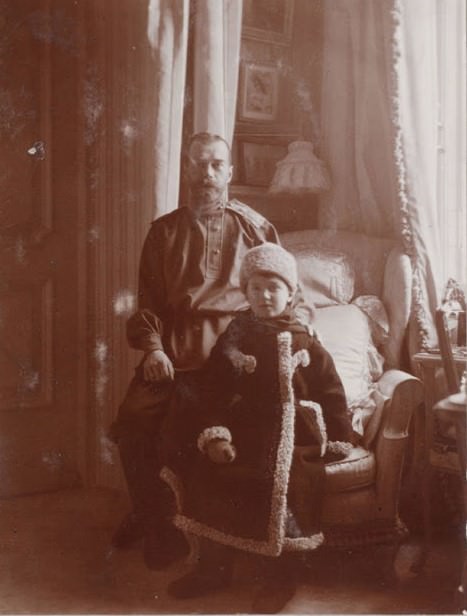In the grand palaces of Russia, a family lived a life of luxury and privilege. They were the Romanovs, the last emperors of Russia, and their story is one of opulence, tragedy, and enduring mystery.
Tsar Nicholas II
Nicholas II, the last Tsar of Russia, ascended the throne in 1894. He was a gentle and well-meaning man, but ill-prepared for the challenges ahead. Russia was a vast and diverse empire, struggling with poverty, social unrest, and political upheaval. Nicholas faced mounting pressure to modernize and reform the country, but he clung to the autocratic traditions of his forefathers..
Alexandra Feodorovna
Alexandra, Nicholas’s wife, was a German princess who struggled to adapt to life in Russia. She was deeply religious and devoted to her family, but she was also shy and reserved, making it difficult for her to win the hearts of the Russian people. Her reliance on the mystic Grigori Rasputin, who claimed to have healing powers for her hemophiliac son, Alexei, further alienated her from the public and fueled rumors of corruption and scandal.
Read more
Nicholas and Alexandra had five children: Olga, Tatiana, Maria, Anastasia, and Alexei. The four daughters were known for their beauty, intelligence, and kindness. Alexei, the heir to the throne, suffered from hemophilia, a blood disorder that made him vulnerable to injury and illness. Despite their privileged upbringing, the Romanov children led relatively simple lives, with a strong emphasis on family and faith.
The End of an Era
The outbreak of World War I brought Russia to its knees. The war effort strained the country’s resources and fueled popular discontent. In February 1917, a revolution forced Nicholas to abdicate the throne. The Romanov family was placed under house arrest, first in the Alexander Palace and later in Siberia.In July 1918, the Romanovs were moved to Yekaterinburg, a city in the Ural Mountains. There, they were imprisoned in a house known as the Ipatiev House. On the night of July 16th, the entire family, along with their loyal servants, were awakened and led to the basement. They were then brutally murdered by Bolshevik revolutionaries, their bodies hidden in a secret grave.
The Mystery of Anastasia
For decades, rumors persisted that Anastasia, the youngest Romanov daughter, had survived the massacre. Several women came forward claiming to be the Grand Duchess, but their claims were never conclusively proven. The mystery of Anastasia’s fate captivated the world and inspired countless books, films, and plays.
























